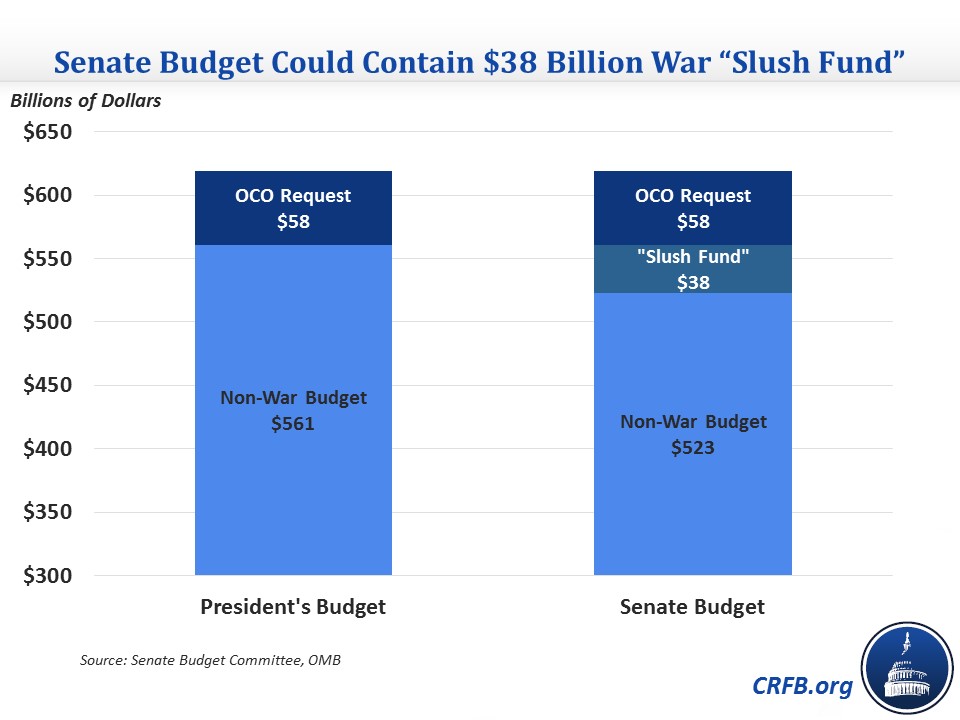Senate Amendment Would Take Further Step Back on War Spending
A big discussion has ensued in both the House and Senate about defense spending, and for the FY 2016 budget, that has meant how much to increase war spending (Overseas Contingency Operations) above the President's request which would effectively provide a defense slush fund. The original Senate budget had no slush fund at all, setting war spending at $58 billion and creating a point of order against exempting more than that amount from statutory spending caps that could only be overcome with 60 votes. However, an amendment in the committee markup increased war spending by $38 billion so that total defense plus war spending would match the President's budget, with the difference being that the President's budget provided $38 billion of sequester relief in 2016 and paid for it.
For background, the Budget Control Act established statutory caps on discretionary spending which have subsequently been reduced by sequestration, with any spending above the caps offset by an across-the-board cut in spending. For FY 2016, the limit on defense discretionary spending set by sequester is $523 billion, an increase of just $2 billion above the FY 2015 level. However, any spending designated as being for “Overseas Contingency Operations” is effectively exempt from those spending limits, creating temptation to use the OCO designation as a way to circumvent spending limits. The budget resolutions reported by the House and Senate legitimize this gimmick by setting defense spending levels that purport to comply with the spending limits under sequestration but blatantly create a slush fund by providing for substantially higher spending levels for OCO than the President requested.
The amendment offered in committee increased the amount of OCO spending in the Senate budget resolution, but it did not remove the point of order against the amount of spending that could be designated as OCO funding exempt from the statutory budget caps created by the Budget Control Act. This meant that an appropriations bill which used the $38 billion slush fund for "war spending" above the President's request could not exempt that extra spending from the BCA spending caps without 60 votes to get around the point of order. Otherwise, lawmakers would have to increase the normal defense spending caps by $38 billion and offset that spending or simply live within the current spending cap and $58 billion of war spending.
Now that the budget has reached the Senate floor, though, another amendment would remove the point of order, landing the final blow on the war spending enforcement in the original budget. After having already created the slush fund, this amendment would remove the main hurdle to senators using it by allowing them to increase war spending to $96 billion or the total defense amount. This would further weaken the spending caps that apply to other defense spending by making it easier to fund the President's full defense request without having to actually raise the spending caps.

This continued backtracking on Senate war spending enforcement combined with the House potentially making the gimmick worse as well are not encouraging. If both the House and Senate are on the same page in terms of the amount of defense spending, they should reflect it in the regular defense budget and offset the costs as previous sequester relief and the President's budget did. Otherwise, as CRFB president Maya MacGuineas said about the gimmicks, "it will send a discouraging message about the willingness to hold the line on spending."


